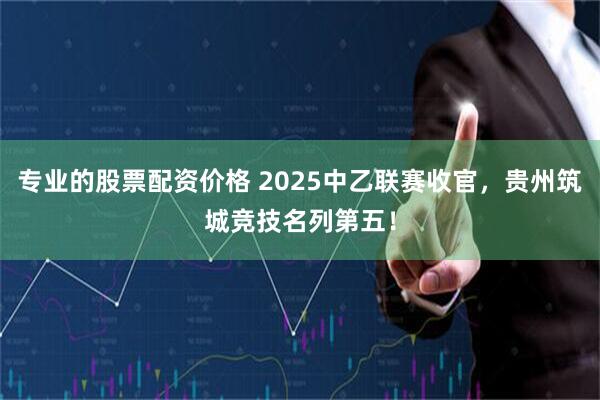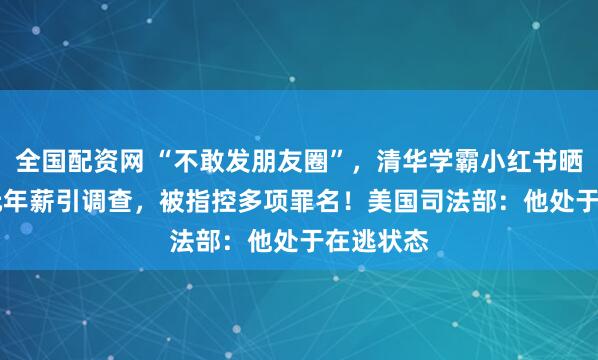
推荐语:专业的股票配资价格
分享我这周在彭博社的采访:不同于美国“赢家通吃”的寡头模式,中国企业正以开源生态实现“换道超车”,有望在AI的黄金十年引领应用层创新。
以下内容转载自:
近日,零一万物CEO李开复博士接受彭博社专访,系统性阐释了他对中美大模型发展路径差异、商业模式演进及未来技术趋势的深度观察。
他深度剖析了中美两国在技术路线上的根本分歧——以OpenAI为代表的美国路径,正以豪赌式投入押注通用人工智能(AGI)的终极胜利;而中国模型公司则凭借开源模式走出了一条迥异的“协同进化”之路:依托开源生态、强调平台共建与应用创新,在理性投入中寻求可持续增长。

零一万物CEO李开复博士
在李开复博士看来,美国模型公司所选择的路径本质上是一种“赢家通吃”的雄心壮志:一家公司率先研发出通用人工智能(AGI),然后碾压其他公司,赢家通吃,最终独揽数万亿美元的利润。
科技巨头豪赌式的投入也使得“泡沫论”甚嚣尘上,李开复博士明确指出:当前市场议论的所谓“泡沫”,并非否定AI技术本身的颠覆性潜力,而是部分公司估值的上涨阶段性地超前于商业化兑现的节奏。
对比之下,中国企业则更愿意通过开源生态,进行某种程度上的“合作”,集力构建起强大的平台,使得每个人都能从平台的知识共享中受益。同时,他也清晰描绘了大模型初创公司在全球AI竞赛中的独特优势与可持续发展的路径。
在李开复博士看来,大模型初创企业更务实的生态卡位是,依托科技巨头的开源基座模型,聚焦应用层,避免陷入资源劣势。以零一万物为例,李开复博士表示,零一万物选择基于全球顶尖开源模型进行继续训练、模型微调与工程化落地,既保障企业客户的数据主权与私有化部署需求,也能够大幅压缩研发成本。
但从基座模型到企业场景,并非“开箱即用”。具备复杂任务规划与执行能力的AI Agent已经成为企业最直接地从AI技术上获得增长价值的方式。具备复杂任务规划与执行能力的AI Agent,正成为企业实现AI价值转化、驱动业务增长的关键路径。
零一万物万智企业大模型一站式平台上已推出企业级Agent“超级员工”,并搭配有开发工具与配置平台,支持企业快速定制专属智能体。目前,零一万物万智平台已汇聚政务、金融、工业(电力和制造业)、办公、销售等5大行业的30类“超级员工”,企业可实现AI Agent能力的快速接入和快速应用。

万智企业大模型一站式平台:b.01.ai
李开复博士表示,AI Agent以大语言模型为“大脑”,搭配记忆能力与任务执行能力,将带来“基于结果”的商业模式再造,成为推动企业智能化变革的核心力量。AI Agent的重要性不仅在于提升效率,更在于重构组织形态乃至社会协作方式。未来的企业竞争力,或将不再取决于人力规模,而在于其构建、调度与进化AI Agent网络的能力。
以下为对话全文:
大模型领域存在“泡沫”?
开源改变竞争形态
彭博社:
过去三年间,您如何看待中国人工智能与美国人工智能的整体发展演进?中国在人工智能领域具备哪些优势,又面临哪些挑战?
李开复:首先,我对“美国AI领域存在严重泡沫”这一观点持不同看法。以OpenAI为例:其年收入约120亿美元,年投入高达400亿美元——表面看,财务损益表极不合理;但关键的一点在于,这400亿美元中绝大部分属于战略性前置投入,用来支撑未来的收入增长预期。如果你相信未来三年OpenAI的营收能实现两三倍甚至五倍的增长,目前OpenAI的超高估值是否合理还没法拍板定论,但这估值泡沫下肯定有某些实质性的价值存在。
当前市场议论的所谓“泡沫”,实际上并不是否定AI未来的增长潜力,而是估值已经阶段性地超出了业绩兑现的节奏。换句话来说,我并不是说当前估值是完全合理的,但必须承认:OpenAI的内在价值是不容忽视的。
再来看中国人工智能领域,和美国人工智能发展至今的本质区别在于闭源还是开源。美国模型所选择的路径本质上是一种“赢家通吃”的雄心壮志:一家公司率先研发出通用人工智能(AGI),然后碾压其他公司,赢家通吃,最终独揽数万亿美元的利润。以OpenAI、Anthropic、谷歌等为代表的头部企业,都汲汲营营大手笔下注。这种逻辑很像一位年轻的天才笃信自己终将获得诺贝尔奖,孤注一掷地全力往前冲。
相较之下,中国更倾向于“协同进化”:大家携手合作,共享成果。所有人在竞争中开放共享,A借鉴B的思路,B学习C的长处。这更像一群聪明而非“天才型”的学生组成了专题学习小组。
彭博社:
开源是否是导致许多中国人工智能创业公司无法盈利的原因?
李开复:当前中美业界对人工智能有一项高度共识:人工智能将带来人类历史上最具颠覆性的技术革命。所以人们也愿意相信人工智能的商业化进程终将到来。只是节奏有先后,美国率先启动 AI巨大的商业化机会,中国将紧随其后。因此,中国企业愿意投入通过开源生态,进行某种程度上的“合作”,集力构建一个强大的平台,那么每个人都能够从平台的知识共享中受益。或者,如果其中有一家公司脱颖而出,那么它就有机会成为下一个伟大的公司。所以,人们乐观地相信人工智能正在改变世界。在当前的AI模型竞争范式中,闭源模型的信念是,一家公司最终会碾压其他所有公司。而开源模式则像是,“先把路修起来,再看谁跑得最快。”
彭博社:
开源模式是否在某种程度上改变了企业的竞争形态?——就像在课堂上,学生不需要从头解题,而是参考最优解法,在此基础上进一步优化与拓展。
李开复:这恰恰是我所在的零一万物的商业模式。我们已全面转向“基于开源做创新”:谁的模型最优,我们就用谁的;无论是深度求索(DeepSeek)还是通义千问(Qwen),我们一视同仁、完全中立。某种程度上,我们的处境与英伟达(NVIDIA)很相似。当然,英伟达的处境要好得多,但核心逻辑一致:我们不押注任何一家胜出,只关注开源生态能否持续向前推进。
这种模式的优势显而易见:开源模型近乎零成本,我们在此基础上进行应用开发的成本会低很多。另外,我们可以自由地获取、改造这些开源模型。对企业用户而言,价值更为直接:他们可以将模型私有化部署,全程本地化部署运行;如果存在不适合上传云端的保密数据,企业也可以遵从自定义的规范,把模型自主权掌握在手中。
相较于美国“赢家通吃”
更看好中国协同创新
彭博社:
但创新终究需要有人买单——那么,谁来承担?不妨以OpenAI为例,资本开支就高达万亿元量级,各方仍期待OpenAI能够探索出如何解决这么高的成本负担。长期来看,OpenAI需要解决如何收回前期巨额投入的难题。在中国的情况完全不同。由于模型是开源的,无需付费,那么技术创新要如何募集资金?又该如何向投资者证明他们的投资会有合理的回报?
李开复:实际上,我更看好中国模式。虽然阿里巴巴、字节跳动、百度等企业投入巨大,但它们愿意持续注资,因为AI对其核心业务具有战略意义,无论是电商、搜索还是社交方面。
这些企业的管理者都是聪明的商人,懂得平衡之道。目前它们的投入规模与OpenAI相比只是九牛一毛。OpenAI的烧钱策略是一场高风险的豪赌,赌的是赢家通吃的野心。而中国巨头们则采取更审慎的投入策略:它们会通盘考量整体财务状况,确保交出稳健的业绩报表。我们目前还没有见到这些企业报告出现巨额亏损。
因此,对财务投资者而言,中国模式显然风险是更可控的。美国市场追捧赢家通吃法则,投资者必须押注个别赢家,这意味着要么赚得盆满钵满,要么输得一败涂地。
彭博社:
您如何看待中国AI领域的发展格局?资金雄厚的阿里、字节等科技巨头中,谁有足够的财力继续进行这场人工智能竞赛?它们与MiniMax、月之暗面(Moonshot)等新兴大模型初创公司相比,竞争优势究竟如何?
李开复:我欣赏那些选择参与模型竞争的初创企业的勇气。我认为对初创企业来说更务实的选择是,依托科技巨头的基座模型,专注于开发应用,面向企业端或是面向消费者端都会有机会。毕竟现阶段,中国初创企业很难像OpenAI那样募集巨额资金,甚至连其十分之一的规模都难以企及。在资金受限的情况下,企业发展必然面临挑战。虽然中国初创企业和科技巨头都拥有优秀人才,但两者之间存在着资金投入的差距、人才规模与密度的差距,初创企业若想自主攻坚基础模型,将会面临一场艰辛的征程。
彭博社:
DeepSeek的崛起,我们或许可以总结为“两个关键时刻”,今年1月它真正进入了全球视野,而实际上早在去年此时,业界就已开始讨论DeepSeek。作为业内深度参与者,大家现在更关心的是:下一个突破点将会是什么?当前正在孕育哪些重要创新?面对即将到来的2026年,我们应该做好哪些准备?
李开复:我认为在基础大模型领域,美国确实处于领先地位。但中国正在迅速借鉴美国的先进成果,同时融入自身优势,目前差距大约保持在三到六个月。这个判断我坚持了一年半,至今依然成立。
在我看来,中国要孕育出真正重塑全球技术范式的重大突破,仍需时间积累。目前更可能诞生的是让人眼睛一亮的创新消费级应用,最具潜力的当属硬件领域:比如一家名为Plaud的企业,其开发的AI装置能持续感知,自动生成会议纪要、规划待办事项并发送个性化提醒。这仅仅是个开始,在中国智造的基础上,这类智能硬件的性价比优势显著,迭代速度更快,产品形态也日益精巧。
正如我们之前讨论过的,中国风投对大语言模型投资确实持审慎态度,但正全力押注硬件方向,包括我所创立的创新工场也在积极布局。当人们谈论硬件时,往往首先想到机器人,特别是人形机器人,但这些领域目前存在估值过高的问题。相比之下,投资轻巧的智能硬件显然更为明智。
当这波人工智能颠覆迈进下一个阶段,我们会发现手机不再是AI的最佳载体。无论是智能眼镜、手表、手环、微型项链乃至近乎隐形的微小设备,都可能成为新终端。因为AI的首要特性是持续在线、随时感知、实时思考,它将成为你的智能外接硬盘,完整记录所见所为。当然,您可能接着会提到隐私议题,那得单独探讨了。
彭博社:
这有点“细思极恐”啊。
李开复:也许我的设备已经在听你的每句话了。(笑)
彭博社:
我的天哈哈哈哈。
彭博社:
最近AI智能体确实成了热议焦点。您能否详细谈谈这股热潮背后的原因?据您判断,这类技术距离真正成为主流还需要多久,特别是针对企业应用?
李开复:智能体其实已经真实存在,只是尚未普及。它的底层依托于大语言模型,大语言模型就像是“大脑”,并且甚至可能是多个各司其职的专用模型协同工作。但智能体最核心的是两大支撑要素:首先是记忆能力。它能记住你的职业背景、行为轨迹、企业信息和规章制度,这使得它能针对行业特性提供服务,而不是像通用聊天机器人那样泛泛而谈。但更关键的是任务执行能力,它不再仅仅为你生成旅行计划,而是直接完成机票酒店的预订执行;不再停留于战略建议层面,而是直接落地实施;它不仅仅是提供广告策略建议,AI就能直接完成广告投放的工作流。
本文摘编翻译自彭博社
Bloomberg China Show:
Q:
In the last three years though, how have you looked at this whole evolution of China AI versus the US? And what are the advantages and challenges for China AI?
A:So firstly, I disagree on the prospects of the U.S. AI because you look at OpenAI, it's making 12 billion, spending 40 billion. Looks like a bad balance sheet, but most of that 40 billion is spent for future revenues. And if you believe there are 2 x, 3 x, 5 x growth for the next three years, it's going to justify that valuation at some point. The bubble is merely that it's gotten ahead of itself, not the likelihood of growth in the future. Not saying it's worth its price. But there's absolute substance is under the foam.
Now back to the China AI, the fundamental difference is actually closed source versus open source. Yes, the US model is necessarily propelled by this ambition and dream of one company reaching AGI first and squashing everyone. Winner take all, worth trillions of dollars. That's what OpenAI, Anthropic, Google and others are betting on. And it's like a genius kid who thinks he or she will win the Nobel Prize. The China approach is -- hey, let's all work together and share. We compete, but let's open source our models. So A learns from B, B learns from C. It's more like a study group of smart kids, maybe not geniuses.
Q:
Is the open source a reason why a lot of these Chinese AI startups can not monetize?
A:Well, I think there's a common belief in US and China that AI is the most important technological revolution ever. There is a belief that this monetization will happen. It's happening first in the US, and it will happen later in China. So there is a bet that if all of China kind of pseudo collaborates through open source, then builds a great platform, then everyone can benefit because the knowledge of the platform. Or if one company comes out ahead, there's a chance to leap ahead and be the next great company as well. So there's tremendous optimism that AI is changing the world. With these models, the closed-source approach is a belief that one company will squash everyone else. And the open source is like, 'Hey, let’s share for now, and we’ll see what happens.'
Q:
Has the open source model in some ways discouraged competition? Because I simply have to look across the classroom and see who has the best answer and simply build on that classmate.
A:Well, that is the business of my company 01.AI. We've pivoted ourselves to build on open source. Whoever has the best model, we will use it. If it's DeepSeek or Qwen, we are agnostic. So we're in a position not so dissimilar from Nvidia. Obviously, Nvidia is much better, but they don't care who wins. We don't care either. We only care that open source moves forward. And it's benefits are that open source is free. It's much much lower cost when it's basically free and we can build on it. We take it, we do whatever we want. And also enterprises, they can take the model in-house, run everything in-house. If they have secret data they don't want to send it to the cloud, well, they don't have to.
Q:
But someone needs to pay for the innovation though. Who? I'll just take the OpenAI example, but you know, there's a complete difference in the Chinese context. Well, you have capex of 1 trillion and people are trying to figure out how are they gonna pay for that. And then people, to your point, longer term, will then have to worry about how they're gonna pay for that. In China's case, when you don't have to pay for it, where it's open source. How is the innovation getting funded? And how do you justify to those asset allocators that they will get a return for their investment?
A:Well, I actually like the Chinese model better. While the likes of Alibaba, ByteDance, Baidu they're paying a lot of money, they're willing to subsidize because it's fundamental to their core business, whether it's e-commerce or search or a social.
And I think they're smart business people. They'll do the balancing. They'll start spending a tiny fraction of the OpenAI spending. Now, the OpenAI's spending is a big bet with big return. It's betting that it will win. Whereas I think Alibaba, Baidu, Tencent, ByteDance, if they're spending more prudently, which they are, they will be able to look at the whole balance sheet and deliver a reasonable result. We don't see any of these people reporting huge losses.
So I think the Chinese model is more prudent for a financial investor. The US is a winner take all, so you pick your winner. If you win, you win big. If you lose, you lose big.
Q:
How do you see it though play out in China? Whether you have the big AI giants like Alibaba, ByteDance, who have the deep pockets to continue on with this sort of AI war in China? How do they stack up against some of these startups like MiniMax or Moonshot?
A:Well, I admire the courage of the smaller companies who choose to compete. I feel that it's more prudent for a smaller company to build either applications or either enterprise or consumer and betting on the fundamental foundation models of the big companies. Because I don't think it's very likely that any startup can raise money the way OpenAI does or even one tenth of OpenAI. And with that, with less money, it is going to be difficult. The talents are obviously very good in the Chinese startups as well as the large companies. But the lack of spending and the lack of huge number of talent and talent density make it an uphill struggle for the startups that try to do that.
Q:
The DeepSeek moment, well, let's call it two moments, right? Because the January moment this year was where it became public to the world. Although it was this time last year where people had started to already talk about DeepSeek, and I want, people are now looking for what's the next one you're connected to and where connected into the industry. What innovations are taking place right now? What should we be prepared for going into next year?
A:Well, I think in terms of the fundamental foundation models, the US is head. But China is very rapidly figuring out the great things US is doing, plus a few of its own good things to basically trail by three to six months. I've been saying this for a year and a half, and it still remains the case.
So I don't think there's gonna be a huge break-out change the world technology in China. That's not likely. What is more likely is that there may be great consumer apps. And what's even much much more likely is Chinese hardware. There's a company called Plaud. It is basically an ambient AI that listens all the time and gives you summaries of all the meetings, tells you what to do, and gives you reminders. And that's just the beginning. That is so much cheaper to build in China, and it's iterated much faster and it's getting smaller.
And I think the Chinese VCs are hesitant to invest in large language models for the reasons we discussed. But they are going all out, including my own Sinovation Ventures, are betting on hardware. When people talk hardware, people think always embodied robotics and humanoid robots. But those are also a bit overpriced. It's much more prudent to invest in small devices.
Because when AI revolution moves forward at the next step, we will see that the best place, the best device on which to use AI is not the phone. Whether it is a glasses or watch or wristband or a little necklace or almost invisible, are all possible. Because AI first means it's always on, always listening, always thinking and it's your external hard drive that’s smart and remembers everything you see and did. I know you're gonna talk about privacy, I know, but that's a separate discussion.
Q:
It gets a bit creepy.
A:I might be listening to you now.
Q:
My goodness, hahaha.
Q:
There's a lot of talks about AI agents. Can you tell us more what's all the buzz around it and how long before it becomes pretty mainstream, when it comes to enterprises?
A:It's real already, but it's not yet mainstream. An agent is built on the larger language model. The large language model is the brain. And there may be multiple large language models, each doing special things. But the two most important things wrap around it. One is memory. It knows who you are, what you did, who's your company, what your policies are. So it's relevant to what you do as opposed to a general chatbot. But the other even bigger thing is that it executes tasks. So instead of giving you a travel itinerary, it gets the travel booked, your airline, your hotel, instead of suggesting what's the strategy, it starts executing. Your ads are placed as opposed to suggesting what ads you might do.
天载配资提示:文章来自网络,不代表本站观点。



